I have been learning how to use my new DIY panorama head by photographing close-up panoramas (that I call Nearscapes) in the garden. Some have worked technically in that the images stitch together well; some have failed – I will show examples of both. I am beginning to understand what works as subject matter as well – only by trying these things will I develop my skills.
First a set of photos taken in the garden with a cheap 10mm fish-eye lens. 2 stitched together well and 2 that failed:

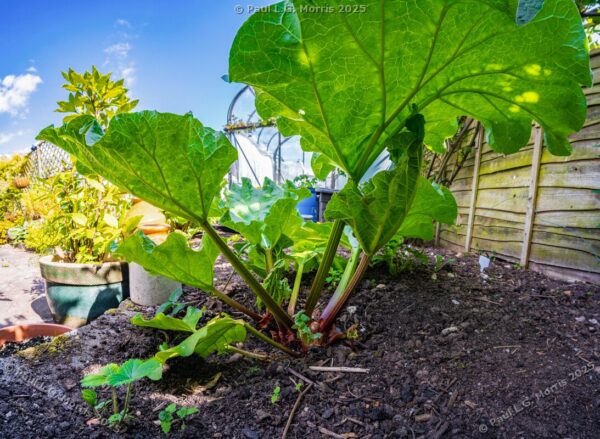
The next 2 are where the stitching failed – this I have marked with red lines and squares:
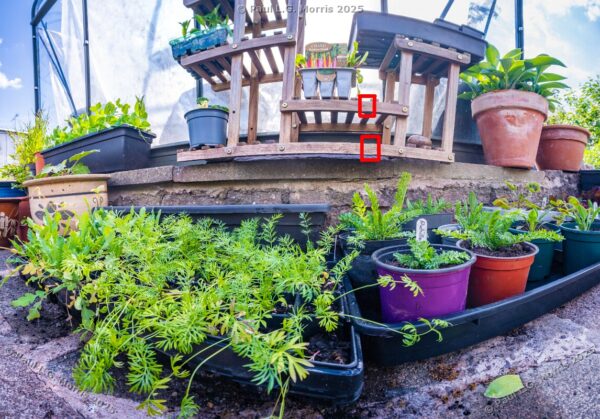
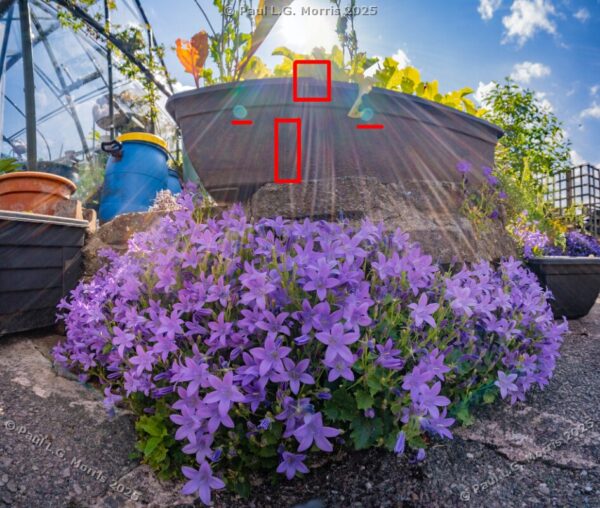
The next set were also taken in the garden (on a different day) but this time using the kit zoom lens set at 15mm:



These next 2 are taken of house plants and less hardy plants under a canopy by the house:
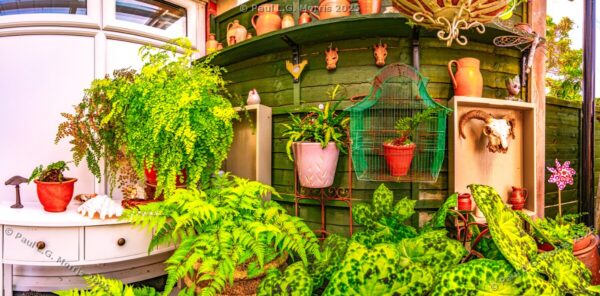

These next 2 show the setup for the last view:
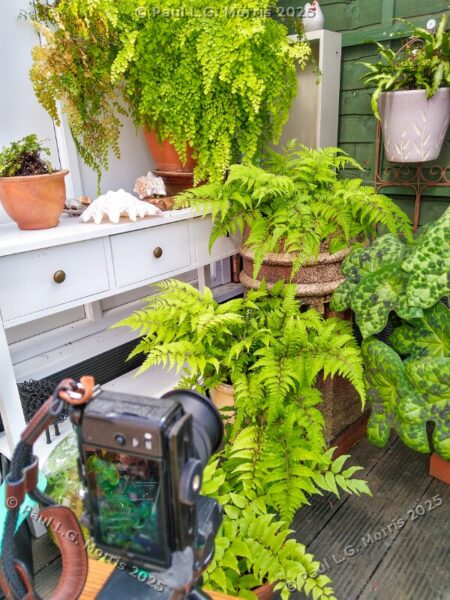
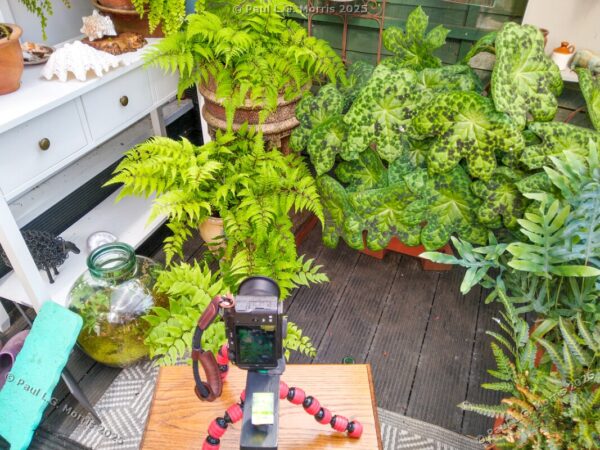
This has been an interesting exercise – I have learned much. But I have discovered a slight misalignment of the lens axis to the pivot point. So I will need to rebuild the pano head…
